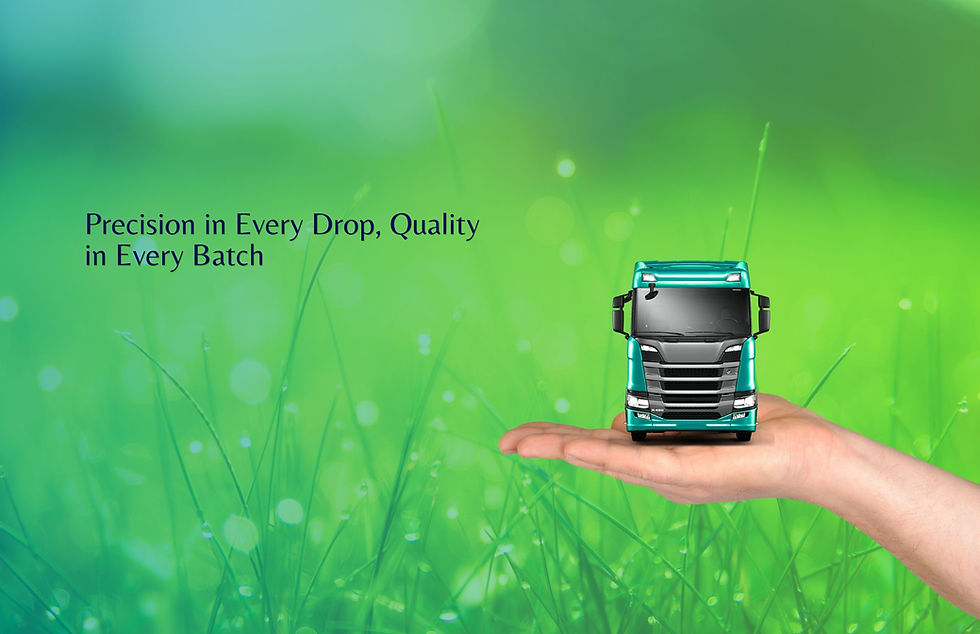Some Interesting Facts about AdBlue / DEF
- Aquadef Team
- Dec 17, 2022
- 3 min read
Updated: Jul 7, 2024

Some Interesting Facts about AdBlue / DEF – Did you know that diesel vehicles emit large amounts of nitrogen oxides (NOx) which cause the formation of acid rains and smog, overall contributing to pollution in the atmosphere? So, when Euro 4 standard was introduced in the EU in 2005/2006, they prescribed a maximum of 0.25 grams of nitrogen oxides per kilometer travelled. For Euro 5 it is 0.18 g/km, and 0.08 g/km for Euro 6.
In response to that, in September 2014, the automotive industry developed Selective Catalytic Reduction (SCR) as one of the best technologies to reduce NOx emissions. According to that, the ISO 22241 standard defined Diesel exhaust fluid (DEF), a solution based on urea and water for the treatment of diesel engine exhaust gases.
So, essentially you are eliminating more than 99% of all NOx that your diesel vehicle produces while you drive – saving the planet one tank at a time.
Is it Blue?
No, contrary to the name AdBlue is actually a clear liquid and looks like thick water.
Will my vehicle stop working if I run out of DEF?
The emissions control systems on the vehicle will know if DEF is not present in the system and shut down. So, the vehicle won’t run without AdBlue running through the system. Typically you’re warned when you’re down to the last few liters, just as you would when you run out of diesel.
What is Diesel Exhaust Fluid (DEF) or AQUADEF Urea Solution?
AdBlue is standardized as AUS 32 (aqueous urea solution) in ISO 22241 and is also known as Diesel Exhaust Fluid.
ISO 22241-1:2006 specifies the quality characteristics of the NOx reduction agent AUS 32 (aqueous urea solution) which is needed to operate converters with selective catalytic reduction, so-called SCR (Selective Catalytic Reduction) converters, in motor vehicles with diesel engines. SCR converters are particularly suitable for selectively reducing the nitrogen oxide (NOx) emissions of diesel engines.
Who requires DEF?
All commercial diesel-engine vehicles that weigh above 7.5 tones and vehicles manufactured after October 2006 (Euro IV and Euro V) are fitted with Selective Catalytic Reduction (SCR) technology. For SCR to function – and for the vehicle to function – AdBlue must be injected into the exhaust gases as a post-combustion process.
How do I store DEF and how long does it last?
Storing AdBlue is straightforward, although it must be kept between 11 and 30°C to maximize its 12-month expectancy. It’s available in IBCs (intermediate bulk containers) of 1,000 liters, 210-litre barrels and a number of smaller 5-, 10-, and 20-litre packs to cater for all requirements.
What do I do if I have spilt DEF fluid?
AdBlue isn’t hazardous to the environment – so you can dilute a small spill with water and simply mop it up. In the event of a large spill, make sure the solution does not enter any drains or waterways. Then, contain the spill with a spill kit and dispose of it safely. Make sure that you never reuse any spilt AdBlue as it will have become contaminated. This will cause expensive damage to your vehicle’s SCR system.
I have accidentally put diesel in my DEF tank, what do I do?
Again, do not start your engine. Just one drop of diesel will pollute up to 20 liters of AdBlue. Running an engine on contaminated AdBlue will disrupt the SCR system and cause engine failure. To avoid additional damage to your vehicle, contact your vehicle manufacturer as you may need to replace some AdBlue components.
Why do DEF prices change?
The cost of AdBlue fluctuates due to the cost of the raw products that make up the solution; urea and water. There are very few active urea processing plants in the India which increases demand and therefore price. Buying in bulk means you can avoid any sudden price increases as a result of raw materials.
What are the benefits of DEF?
Reduced NOx and CO2 emissions from commercial vehicles are not the only benefits of DEF. It also increases your fleet’s MPG and helps your business achieve greener goals and accreditation. It’s completely safe to handle, easy to store and non-flammable.
.png)







Comments